The document discusses a shared leadership model for 21st-century schools that emphasizes collaboration between principals and counselors to address multifaceted student needs. It highlights the necessity for educational leadership teams to adapt by combining skills to create supportive environments that enhance student success academically, socially, and emotionally. The article also explores contemporary issues faced by these leaders, advocating for a synergistic approach to optimize educational outcomes through effective communication and collaboration.

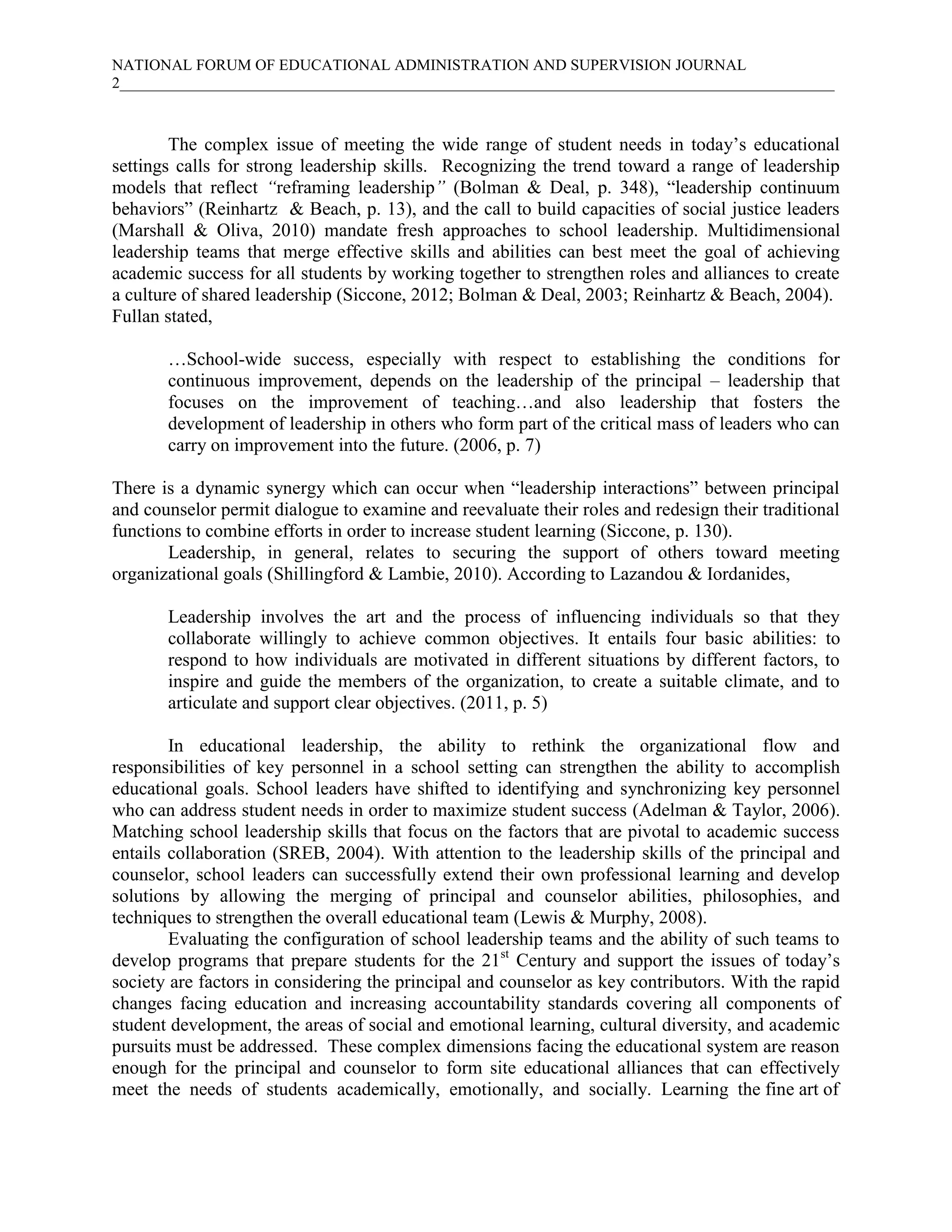
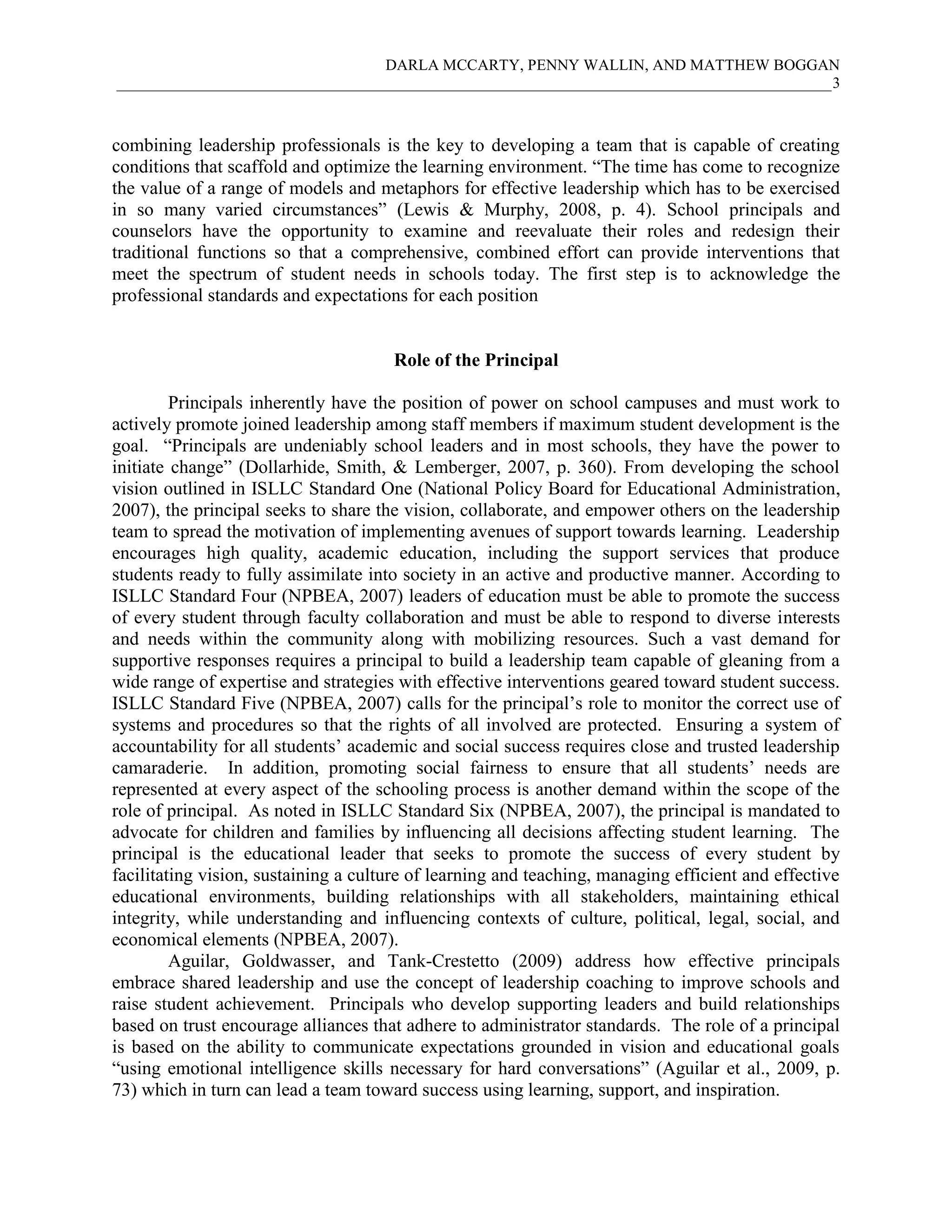
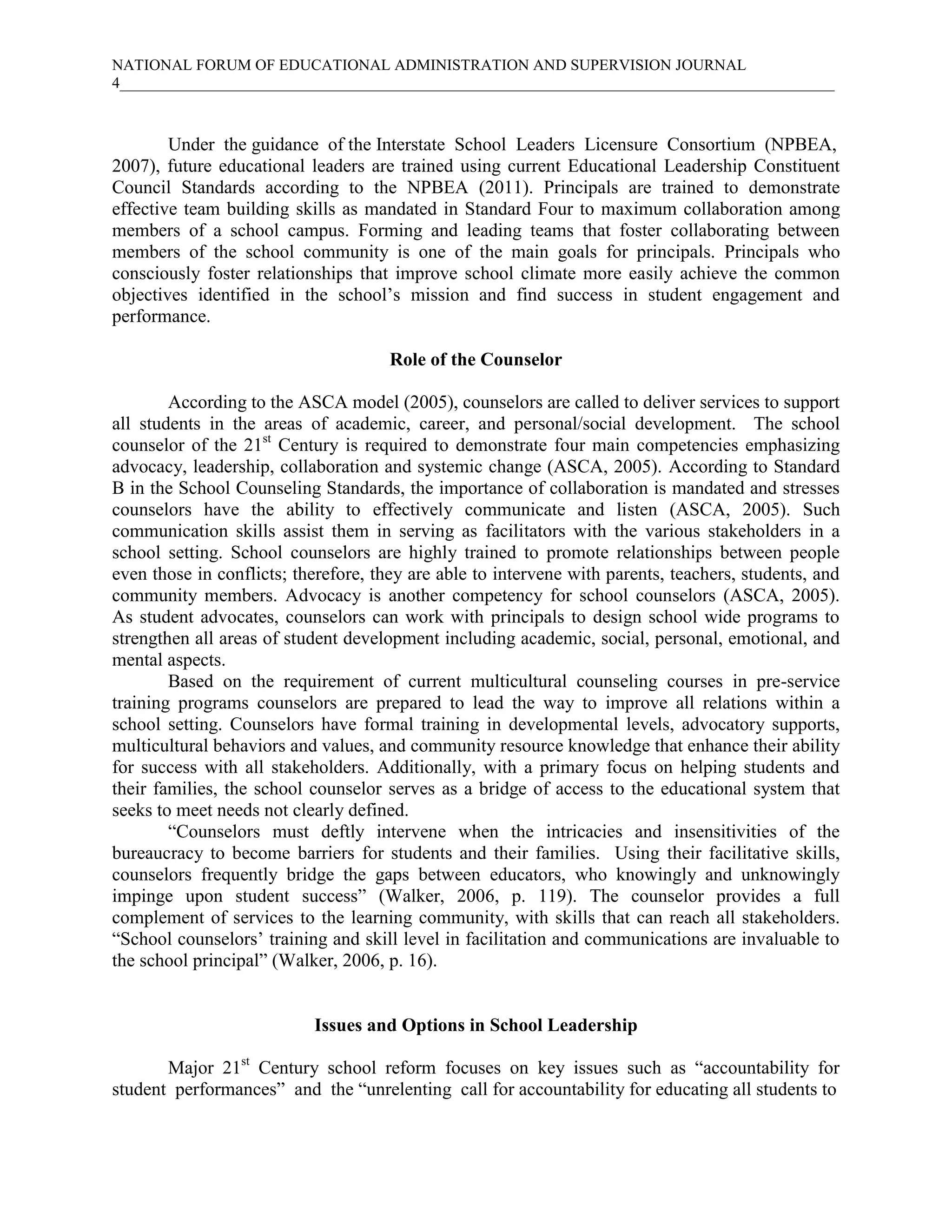
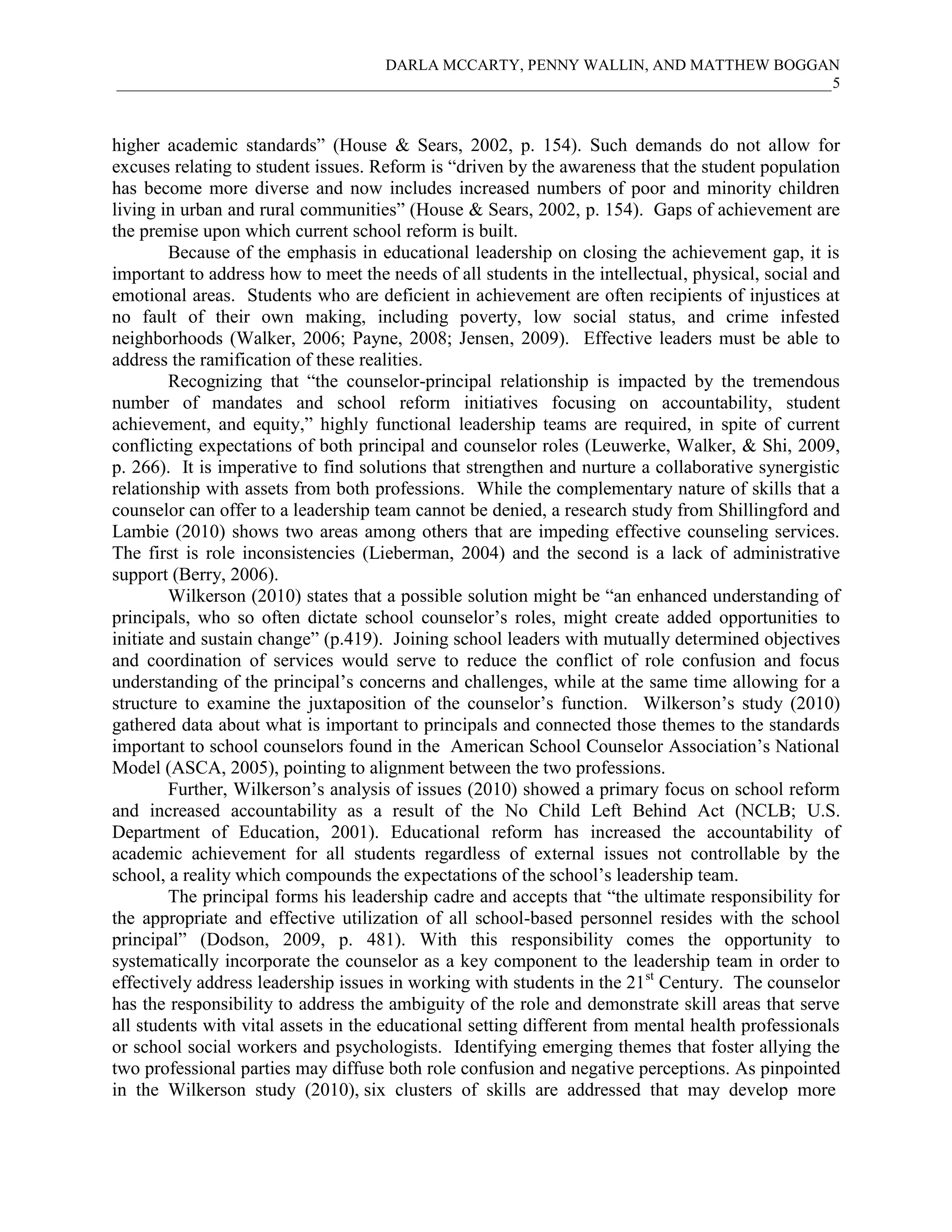

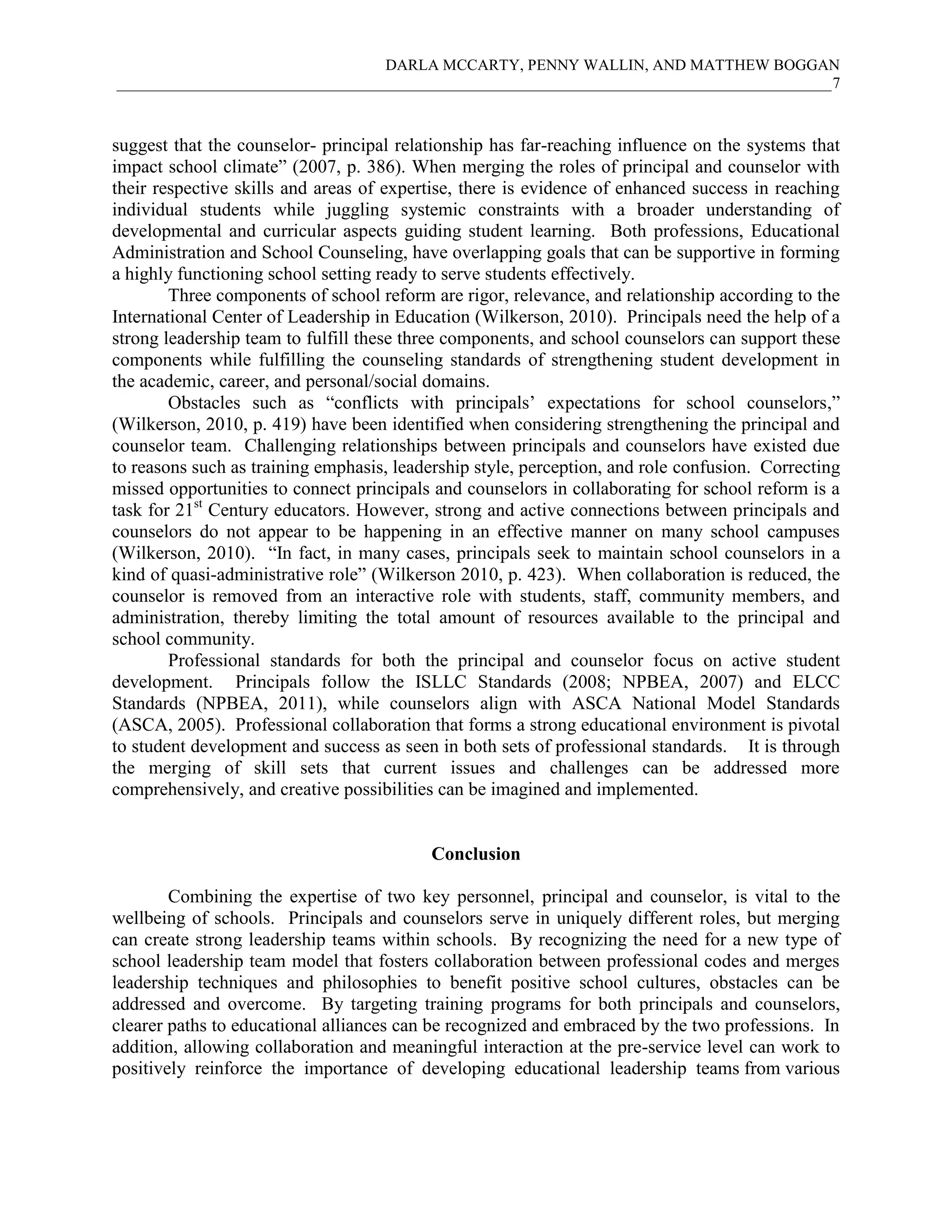

![DARLA MCCARTY, PENNY WALLIN, AND MATTHEW BOGGAN
____________________________________________________________________________________________9
Leuwerke W.C., Walker, J., & Shi, Q. (2009, April). Informing principals: The impact of
different types of information on principals’ perceptions of professional school
counselors. Professional School Counseling [serial online], 12(4), 263-271.
Lewis, P., & Murphy, R. (2008). New directions in school leadership, School Leadership &
Management, 28(2), 127-146.
Lieberman, A. (2004), Confusion regarding school counselor functions: School leadership
impacts role clarity. Education, 124(3), 552-558.
National Policy Board for Educational Administration (NPBEA). (2007, December 12).
Educational leadership policy standards: ISLLC 2008. Retrieved from:
http://www.teal.usu.edu/files/uploads/asc/elps_isllc2008.pdf
National Policy Board for Educational Administration (NPBEA). (2011). Educational
Leadership Constituent Council: ELLC 2011. Retrieved from:
http://www.ncate.org/LinkClick.aspx?fileticket=zRZI73R0nOQ%3D&tabid=676
Payne, R. (2008). Under-resourced learners: 8 strategies to boost student achievement.
Highlands, TX: aha! Process.
U.S. Department of Education. (2001). No Child Left Behind Act of 2001. Retrieved
from http://www.ed.gov/about/offices/list/oese/legislation.html
Reinhartz, J., & Beach, D. (2004). Educational leadership: Changing schools, changing
roles. Boston, MA: Pearson.
Siccone, F. (2012). Essential skills for effective school leadership. Boston, MA: Pearson.
Shillingford, M.A., & Lambie, G.W. (2010, April). Contribution of professional school
counselors’ value and leadership practices to their programmatic service delivery.
Professional School Counseling, 13(4), 208-217.
Southern Regional Education Board (SREB). (2004). Using rigor, relevance, and relationships
to improve student achievement: How some schools do it. Atlanta, GA: Author.
Walker, J. (2006). Principals and counselors working for social justice: A complementary
leadership team. Guidance & Counseling, 21(2), 114-124.
Wilkerson, K. (2010). School counselor reform and principals’ priorities: A preliminary
content analysis of the national association for secondary school principals.
(NASSP) Bulletin (1997-2007). Informed by Guiding Documents for the
American School Counselor Association (ASCA). Education, 131(2),
419-436.](https://image.slidesharecdn.com/mccartydarlasharedleadershipnfeasjv32n42014-170714165822/75/Mc-carty-darla-shared-leadership-nfeasj-v32-n4-2014-9-2048.jpg)